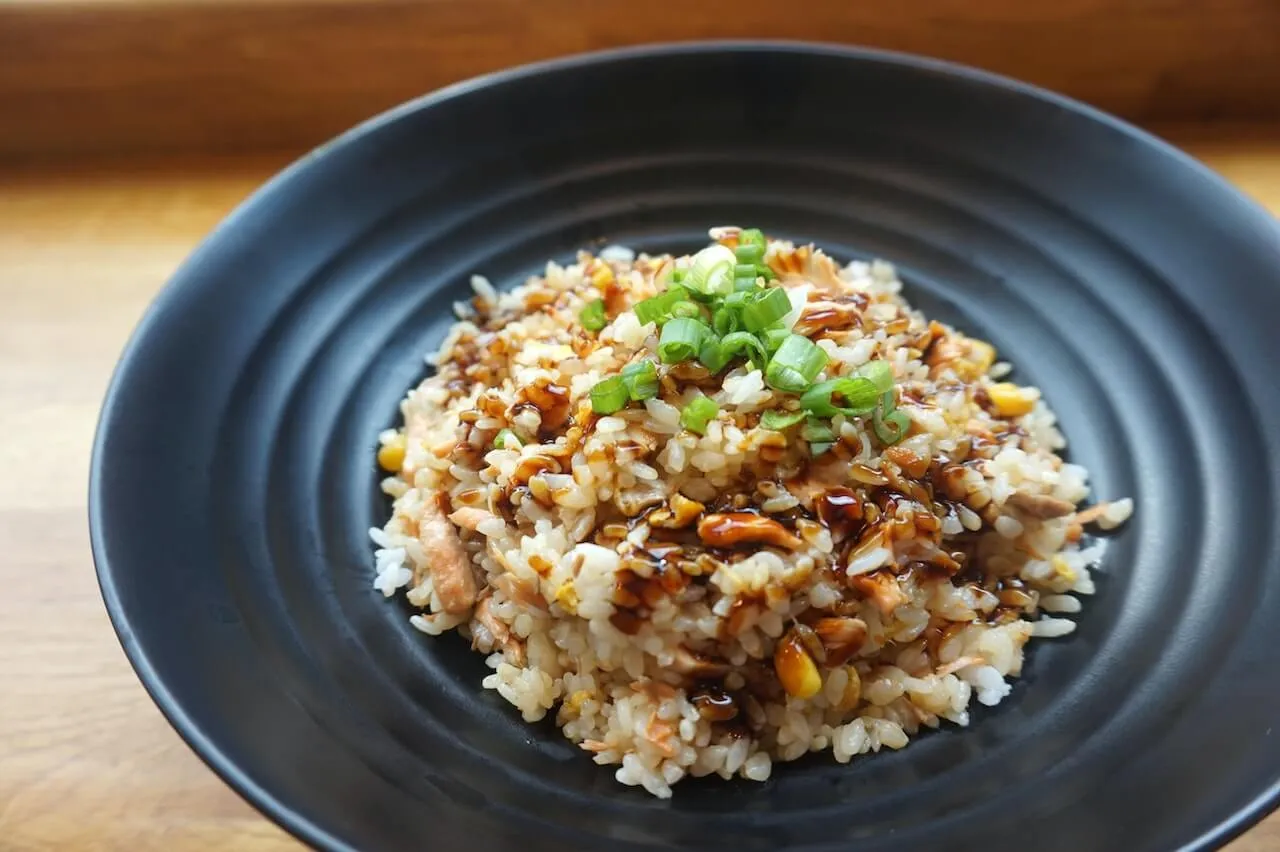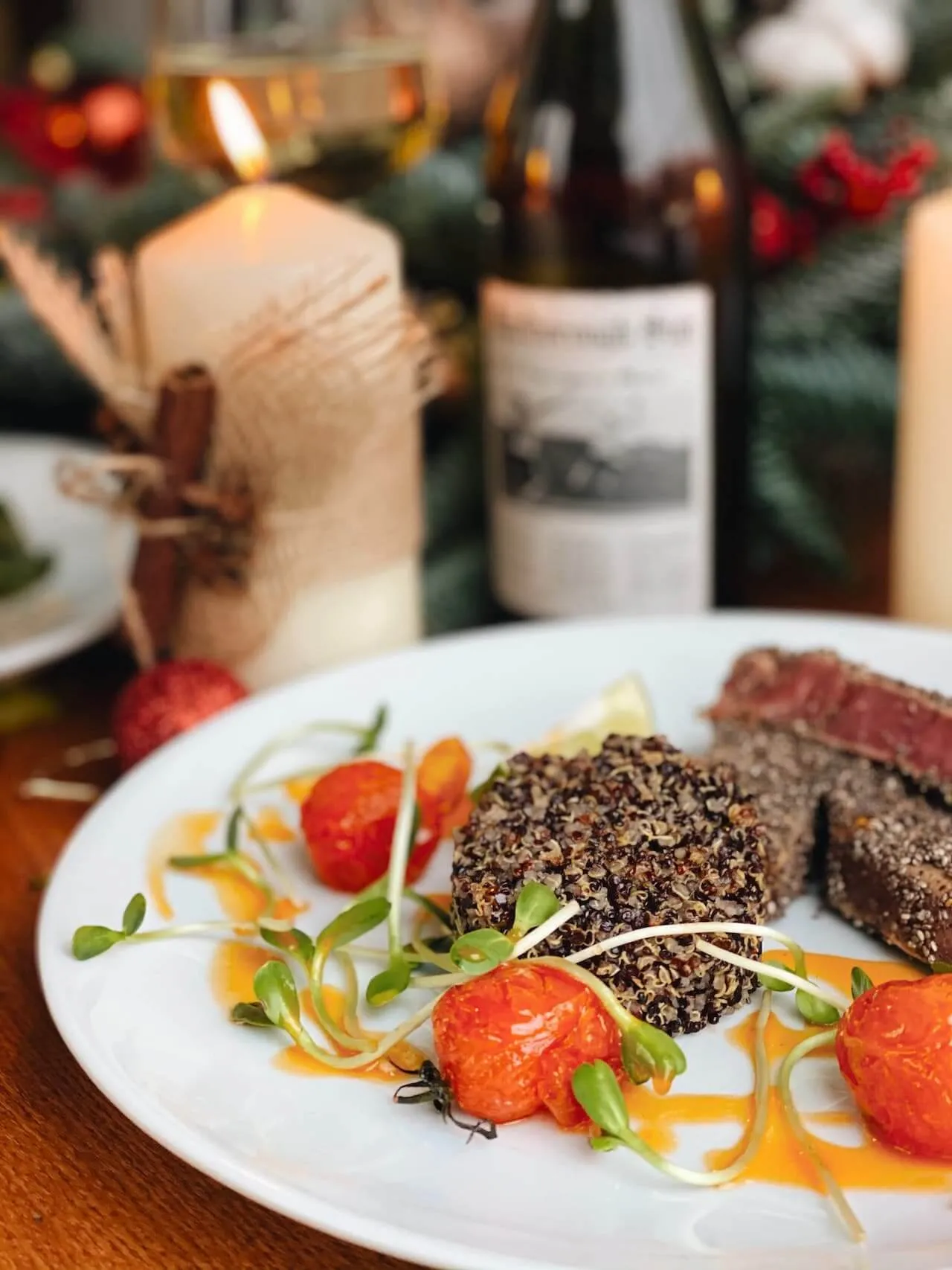Brown rice has been a staple of the human diet for centuries. It is an unrefined whole grain, which makes it more nutritious than its white rice counterpart. A grain is considered whole if it contains three parts: the bran, germ, and endosperm. The bran is the fibrous outer layer. The germ is the embryo, which can sprout into a new plant, and the endosperm is the starchy food source.
Brown rice is not only a great source of carbohydrates but also contains essential vitamins, minerals, and fiber that are important for maintaining good health.
In this article, we will explore the nutritional benefits of brown rice, including its low glycemic index, high fiber content, and essential vitamins and minerals. We will also explore how brown rice can help with weight management, type 2 diabetes prevention, and overall health. Read on to discover why brown rice is a smart choice for a healthy and balanced diet.
First Things First: What is the Glycemic Index?
The glycemic index (GI) measures the impact of carbs on blood sugar levels. It ranges from 0 to 100, with higher values given to foods that cause rapid rises in blood sugar levels. Foods with a low GI (55 or less) are broken down more slowly, causing a gradual rise in blood sugar levels. Foods with a high GI (70 or more) are broken down quickly, rapidly increasing blood sugar levels.
The importance of cooking methods regarding glycemic index is that some methods, such as boiling or roasting, can lower the GI of foods. This is because cooking can cause the starch to be broken down more slowly, which leads to a slower rise in blood sugar levels. Generally, foods with a low GI (55 or less) are better for maintaining blood sugar levels, while foods with a high GI (70 or more) are considered less healthy due to their rapid rise in blood sugar levels.
{{mid-cta}}
Glycemic Index of Brown Rice
The average glycemic index of brown rice is 68 +/- 4, with some sources noting it can be as low as 55. Brown rice is a great source of complex carbohydrates, which means it takes longer for the body to break down and absorb, resulting in a lower glycemic index. Brown rice is also a good fiber source, which helps slow digestion and helps you feel fuller faster.
So how does brown rice compare to other foods? Let’s take a look!
GI Ranges:
- High GI: 70-100 (should be avoided in those living with type II diabetes)
- Medium GI: 56-69
- Low GI: 0-55
High GI Foods:
- White bread: 75
- Cornflakes: 81
- White rice: 87
- Rice milk: 86
Medium GI Foods:
- Popcorn: 55
- Oatmeal: 58
- Sweet potatoes (boiled): 63
Low GI Foods:
- Apples: 36
- Skim Milk: 37
- Lentils: 32
Nutritional Facts of Brown Rice
One cup of cooked brown rice contains 215 calories, 5 grams of protein, 44 grams of carbohydrates, 1.7 grams of fat, and 3.5 grams of dietary fiber. While it may not be low in carbs, it's a great supplement for athletes and can help with weight loss.
Brown rice contains essential vitamins and minerals such as iron, potassium, zinc, and B vitamins and is especially rich in magnesium, providing 21 percent of the recommended daily intake in a single cup. Magnesium helps regulate blood sugar levels, supports healthy muscle and nerve function, and is an important nutrient for healthy bones and teeth.
Benefits and Disadvantages of Eating Brown Rice
Pros
- Helps control blood sugar levels1,5
- Aids in weight loss
- High in fiber
- Rich in antioxidants
- Good source of essential vitamins and minerals
- Promotes digestive health
- Inversely associated with the risk of heart disease and type II diabetes2,5
- May help lower cholesterol levels3
- Boosts the immune system5
- Helps to lower blood pressure5
- Assists in treating anxiety disorders5
Cons
- Risk of arsenic and cadmium contamination4,6
- More complex to digest, which can worsen constipation
- Can irritate the digestive tract (bloating)
- Medium glycemic index, as opposed to having a low GI
Is Brown Rice Good for Weight Loss?
Yes, brown rice can be good for weight loss. Brown rice is high in fiber, which helps you to feel fuller faster and can aid in weight loss efforts.
The ideal serving size of brown rice in a meal should be 1/2 cup cooked, about the size of a small fist. To ensure a balanced diet, keep track of portion sizes and combine brown rice with various other whole foods such as lean proteins, fruits, and vegetables.
Keep in mind that fried brown rice can contain unhealthy fats. It’s best to boil or toast the rice.
Brown Rice vs. White Rice
Brown and white rice have different glycemic index (GI) ratings, calories, and nutritional values. For example, brown rice has a GI rating of about 68, while white rice has a GI rating of around 87.
This difference is because brown rice is a whole grain, while white rice is a refined grain. As a result, brown rice also contains more dietary fiber than white rice, providing additional health benefits.

In terms of calories, brown rice has more calories than white rice. A cup of cooked brown rice contains 215 calories, while a cup of cooked white rice contains 204 calories. The nutritional value of brown rice is higher than that of white rice, as brown rice is a whole grain that contains more vitamins and minerals. Brown rice is a good source of manganese, phosphorus, selenium, thiamin, niacin, vitamin B6, and magnesium, while white rice is mostly a source of carbohydrates.
In conclusion, brown rice has a lower GI rating, more calories, and more nutritional value than white rice. As such, brown rice is healthier than white rice regarding GI, calories, and nutritional value.
Try These Fun Recipes!
Brown Rice with Spinach and Parmesan Cheese
Brown Rice with Spinach and Parmesan Cheese is a healthy, delicious, and easy-to-make dish served as a side or a main course. The recipe is made by cooking brown rice with a flavorful combination of garlic, onion, and vegetable broth until the rice is tender and the broth has been absorbed. Then, fresh spinach is added to the rice and stirred until wilted. Finally, grated Parmesan cheese is sprinkled over the top, adding a rich, nutty flavor.
This recipe is perfect for those who want to incorporate more whole grains and leafy greens into their diet and those looking for a tasty vegetarian or gluten-free option. Brown rice is a great source of fiber and essential nutrients, while spinach is rich in vitamins and minerals. Adding Parmesan cheese gives this dish a delicious flavor and provides a good source of calcium.
Toasted Brown Rice with Mushrooms & Thyme Recipe
Toasted Brown Rice with Mushrooms & Thyme is a flavorful and aromatic dish that combines nutty brown rice with savory sautéed mushrooms and fragrant thyme. The recipe starts by toasting the brown rice in a dry pan until it is lightly browned and fragrant. This step enhances the flavor and texture of the rice, giving it a slightly nutty taste and a firmer texture.
Next, the toasted rice is cooked in a mixture of water and broth until it is tender and all the liquid is absorbed. Meanwhile, mushrooms are sautéed in butter until golden brown and tender. Finally, the mushrooms are combined with the cooked rice and fresh thyme leaves, giving the dish a delicious earthy flavor and a subtle herbal aroma.
This recipe is perfect for a healthy, flavorful side dish or a vegetarian main course. Brown rice is a great source of fiber and essential nutrients, while mushrooms are low in calories and high in vitamins and minerals. Adding fresh thyme adds flavor and provides antioxidants and other health benefits.

Mexican Rice
Mexican Rice is a flavorful and easy-to-make dish that can be prepared in 30 minutes. It is made with long-grain rice, oil, garlic salt, ground cumin, onion, chicken broth, tomato sauce, and sometimes vegetables like carrots and peas. The rice is first toasted in hot oil until it turns golden brown, which gives it a nutty flavor and fluffy texture. Then the remaining ingredients are added and cooked until the rice is tender. This dish is popular in Mexican cuisine and is often served as a side dish or a main meal.
Using a CGM with Signos: Real-Time Data, Backed by AI
Signos pairs a real-time glucose biosensor with AI trained on tens of millions of data points to deliver personalized, science-backed guidance. See exactly how your body responds, and take action.
Learn how it works. Ready to get started? Join now.
Topics discussed in this article:
References
- Bui TN, Le TH, Nguyen do H, Tran QB, Nguyen TL, Le DT, Nguyen do VA, Vu AL, Aoto H, Okuhara Y, Ito Y, Yamamoto S, Kise M. Pre-germinated brown rice reduced both blood glucose concentration and body weight in Vietnamese women with impaired glucose tolerance. J Nutr Sci Vitaminol (Tokyo). 2014;60(3):183-7. doi: 10.3177/jnsv.60.183. PMID: 25078374.
- Huang, M., Li, X., Hu, L. et al. Comparing texture and digestion properties between white and brown rice of indica cultivars preferred by Chinese consumers. Sci Rep 11, 19054 (2021). https://doi.org/10.1038/s41598-021-98681-7
- Roohinejad S, Omidizadeh A, Mirhosseini H, Saari N, Mustafa S, Yusof RM, Hussin AS, Hamid A, Abd Manap MY. Effect of pre-germination time of brown rice on serum cholesterol levels of hypercholesterolaemic rats. J Sci Food Agric. 2010 Jan 30;90(2):245-51. doi: 10.1002/jsfa.3803. PMID: 20355038.
- Jackson BP, Taylor VF, Karagas MR, Punshon T, Cottingham KL. Arsenic, organic foods, and brown rice syrup. Environ Health Perspect. 2012 May;120(5):623-6. doi: 10.1289/ehp.1104619. Epub 2012 Feb 16. PMID: 22336149; PMCID: PMC3346791.
- Patil SB, Khan MK. Germinated brown rice as a value added rice product: A review. J Food Sci Technol. 2011 Dec;48(6):661-7. doi: 10.1007/s13197-011-0232-4. Epub 2011 Jan 22. PMID: 23572802; PMCID: PMC3551059.
- Shraim AM, Ahmad MI, Rahman MSF, Ng JC. Concentrations of essential and toxic elements and health risk assessment in brown rice from Qatari market. Food Chem. 2022 May 15;376:131938. doi: 10.1016/j.foodchem.2021.131938. Epub 2021 Dec 23. PMID: 34992047.




.svg)


.webp)







.svg)
.svg)
.svg)
.svg)
.svg)
.svg)
.svg)
